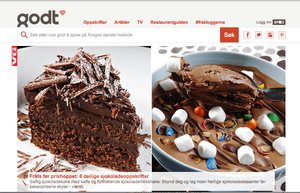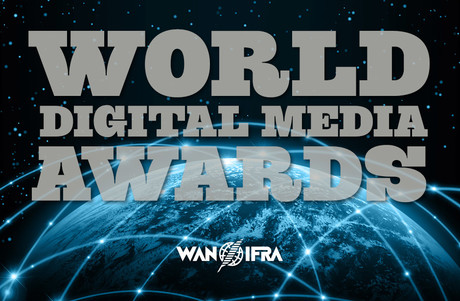A banner year for the Guardian
For a newspaper founded in 1821 it is a bold claim to say that “2013 was the year the Guardian came of age as a digital news organisation,” but that is exactly what the newspaper believes, and taking the accolade of Best News Site can only add weight to that belief. While a number of elements contributed to winning the award, including the Guardian Witness app and the the coverage of the Snowden story, the common theme was the way the paper broke and then developed planet-spanning stories while maintaining a local perspective.
This is a newspaper that started life as the Manchester Guardian and which is now winning awards for a tale that started with a blogger based in Brazil, working with a source in Hawaii and publishing from the paper’s web-only operation in New York. Simultaneously, the Guardian Witness app brings eyewitness tales from conflicts and experiences around the world. Taken together, the paper’s coverage is a fine example of how local/global coverage can be done by a news organisation that delivers on digital-first.
It also paid dividends, with the paper passing 100 million unique visitors and growth of both readership and revenue of around 30 percent.
Dagbladet visualises IP addresses
Data security has proved a rich seam for other news organisations too – as shown by Dagbladet, which set out to test the data security of an entire country by searching through Norway’s IP addresses.
That’s a tough story to tell, and a lot of media would shy away from something that sounds too technical and too dry to present to a wider audience. What is outstanding about the Null CTRL project, seeing it win the Best Data Visualisation Project in the process, was the way it took big data and brought out the human touch (showing how to control the temperature in a private house, for example), as well as using clickable visualisations, video, and parallax layers to bring the whole project to life.“Big data” and “data visualisation” are buzz-words that are often bandied around but rarely put into practice so satisfyingly.
Mars not a stretch for BBC
Big projects were also the theme of the Best Video award, which went to the BBC, an operation long used to winning awards for its high-profile documentaries and now gaining plaudits in the online interactive sphere.
Projects don’t come much bigger than the idea of “How to put a human on Mars,” and the corporation produced a spectacular array of video shot for the web, 3D interactive graphics, virtual reality video, and text.
So spectacular was the result that the decision was taken to make a full TV documentary based on the online project – a reversal of the normal sequence of events and another indicator of how digital-first is more than a mere catchphrase and one that is relevant to more than just breaking news.
As Amanda Farnsworth, editor at the BBC’s Visual Journalism, says: “Mars became a truly multiplatform project pretty quickly. We started by thinking of it as an interactive with moveable 3D models, text and small chunks of video shot specially for the web, but such was the amount and quality of that video that we could see how it would easily work in a half-hour documentary format for TV. We could use Mars as a model of one way we can do long form, video-rich current affairs.”
DOTYK perfect niche for tablet
As much as big data and big science continue to make their mark on media, the sharp observer will always be looking for the more niche players, and the awards showcased some excellent examples of how new products can help redraw the media landscape. DOTYK (“touch”), for example, is billed as the first tablet-only weekly, and its Czech publishers claim it is a response to demand for truly independent media in the republic. The result saw DOTYK win the Tablet Publishing award.
Quality journalism purely for the small screen is a departure from most tablet ventures. Within only a few months, DOTYK had been downloaded to 50,000 tablets, with the January 2014 issue exceeding 35,000 downloads – a niche perhaps, but one that larger players will be wise to keep an eye on.
VG’s food site scores
Niche can be platform, it can be the subject matter, but it can also be a new approach to a familiar staple. The winner of the Best Outstanding New Project was not a hard-hitting news medium or a new device, but actually a food site from VG (Verdens Gang) of Norway (which took home four awards in all). Godt.no (pictured above) went from a new launch to the biggest food site in Norway in 10 months, with 230,000 unique visitors a week and 3.5 million monthly page views.
Camilla Bjørn, the editor of VG’s niche sites, says “Godt.no has been a great learning experience both in creating niche content digitally, at the same time exploring new and innovative commercial integrations, plus brand content. It has improved the way we organise product development, including all relevant sections of our media house in new collaborations, creating excellent employee synergy.”
These examples are only a few of the new ideas and approaches on show in the awards candidates. A full list can be found by clicking here.



